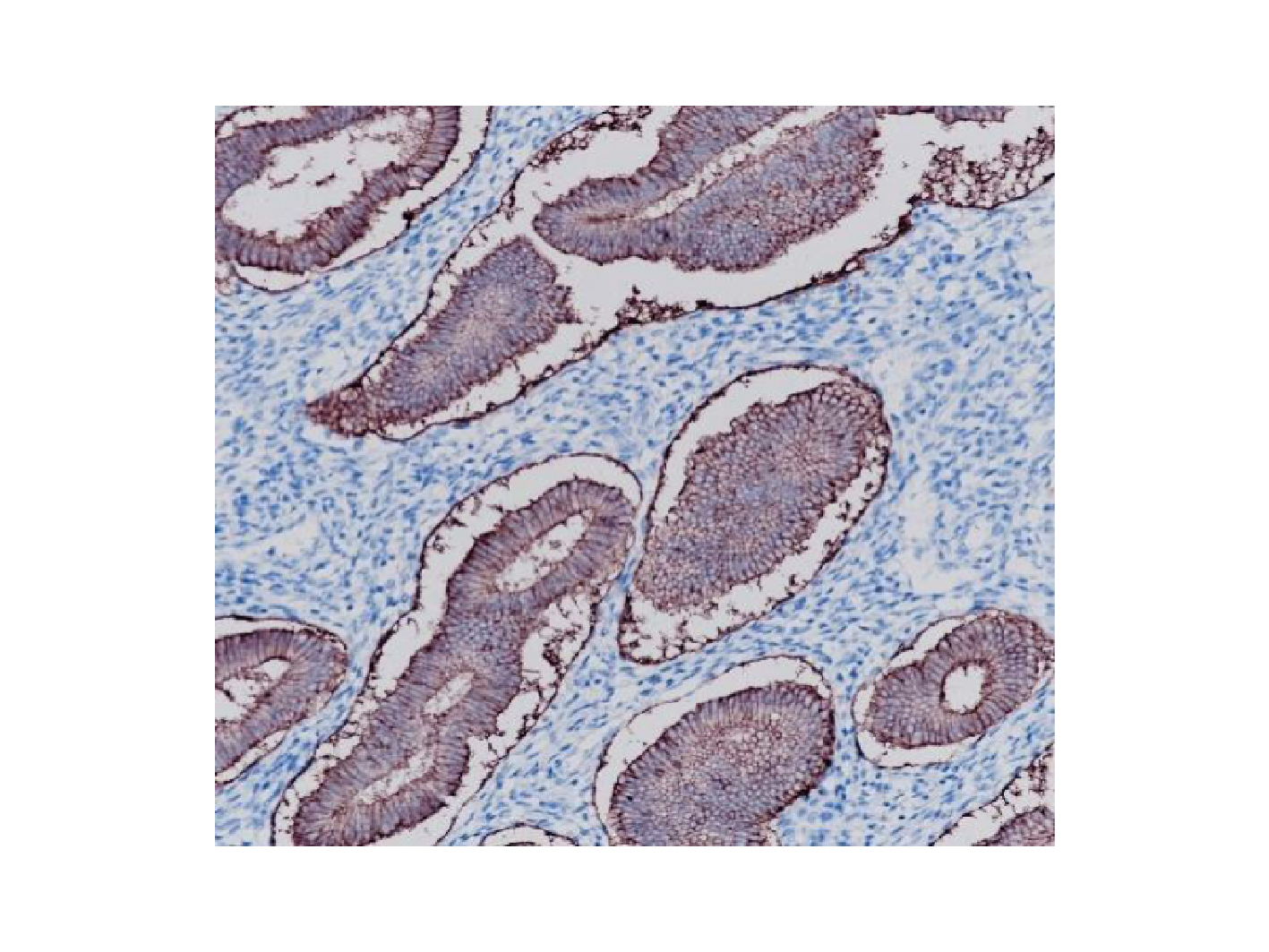| 1. Simon, B B and 5 more authors.. (1990) Epithelial glycoprotein is a member of a family of epithelial cell surface antigens homologous to nidogen, a matrix adhesion protein.. Proceedings of the National Academy of Sciences of the United States of America, [PMID:2108441] |
| 2. Szala, S S and 6 more authors.. (1990) Molecular cloning of cDNA for the carcinoma-associated antigen GA733-2.. Proceedings of the National Academy of Sciences of the United States of America, [PMID:2333300] |
| 3. Strnad, J J and 9 more authors.. (1989) Molecular cloning and characterization of a human adenocarcinoma/epithelial cell surface antigen complementary DNA.. Cancer research, (15): [PMID:2463074] |
| 4. Perez, M S MS and Walker, L E LE.. (1989) Isolation and characterization of a cDNA encoding the KS1/4 epithelial carcinoma marker.. Journal of immunology (Baltimore, Md. : 1950), (15): [PMID:2469722] |
| 5. Linnenbach, A J AJ and 7 more authors.. (1989) Sequence investigation of the major gastrointestinal tumor-associated antigen gene family, GA733.. Proceedings of the National Academy of Sciences of the United States of America, [PMID:2911574] |
| 6. Björk, P P and 8 more authors.. (1993) Isolation, partial characterization, and molecular cloning of a human colon adenocarcinoma cell-surface glycoprotein recognized by the C215 mouse monoclonal antibody.. The Journal of biological chemistry, (15): [PMID:7693697] |
| 7. Linnenbach, A J AJ and 7 more authors.. (1993) Retroposition in a family of carcinoma-associated antigen genes.. Molecular and cellular biology, [PMID:8382772] |
| 8. Chong, J M JM and Speicher, D W DW.. (2001) Determination of disulfide bond assignments and N-glycosylation sites of the human gastrointestinal carcinoma antigen GA733-2 (CO17-1A, EGP, KS1-4, KSA, and Ep-CAM).. The Journal of biological chemistry, (23): [PMID:11080501] |
| 9. Münz, Markus M and 5 more authors.. (2004) The carcinoma-associated antigen EpCAM upregulates c-myc and induces cell proliferation.. Oncogene, (29): [PMID:15195135] |
| 10. Hillier, Ladeana W LW and 121 more authors.. (2005) Generation and annotation of the DNA sequences of human chromosomes 2 and 4.. Nature, (7): [PMID:15815621] |
| 11. Münz, Markus M, Zeidler, Reinhard R and Gires, Olivier O.. (2005) The tumour-associated antigen EpCAM upregulates the fatty acid binding protein E-FABP.. Cancer letters, (8): [PMID:15922867] |
| 12. Ladwein, Markus M and 8 more authors.. (2005) The cell-cell adhesion molecule EpCAM interacts directly with the tight junction protein claudin-7.. Experimental cell research, (1): [PMID:16054130] |
| 13. Munz, Markus M, Fellinger, Karin K, Hofmann, Tanja T, Schmitt, Barbel B and Gires, Olivier O.. (2008) Glycosylation is crucial for stability of tumour and cancer stem cell antigen EpCAM.. Frontiers in bioscience : a journal and virtual library, (1): [PMID:18508581] |
| 14. Sivagnanam, Mamata M and 15 more authors.. (2008) Identification of EpCAM as the gene for congenital tufting enteropathy.. Gastroenterology, [PMID:18572020] |
| 15. Ligtenberg, Marjolijn J L MJ and 17 more authors.. (2009) Heritable somatic methylation and inactivation of MSH2 in families with Lynch syndrome due to deletion of the 3' exons of TACSTD1.. Nature genetics, [PMID:19098912] |
| 16. Ng, Valerie Y VY, Ang, Sheu Ngo SN, Chan, Jia Xin JX and Choo, Andre B H AB.. (2010) Characterization of epithelial cell adhesion molecule as a surface marker on undifferentiated human embryonic stem cells.. Stem cells (Dayton, Ohio), [PMID:19785009] |
| 17. Lu, Tung-Ying TY and 6 more authors.. (2010) Epithelial cell adhesion molecule regulation is associated with the maintenance of the undifferentiated phenotype of human embryonic stem cells.. The Journal of biological chemistry, (19): [PMID:20064925] |
| 18. Seimetz, Diane D, Lindhofer, Horst H and Bokemeyer, Carsten C.. (2010) Development and approval of the trifunctional antibody catumaxomab (anti-EpCAM x anti-CD3) as a targeted cancer immunotherapy.. Cancer treatment reviews, [PMID:20347527] |
| 19. Thomas R Burkard,Melanie Planyavsky,Ines Kaupe,Florian P Breitwieser,Tilmann Bürckstümmer,Keiryn L Bennett,Giulio Superti-Furga,Jacques Colinge. (2011-01-29) Initial characterization of the human central proteome.. BMC systems biology, 5 (17-17). [PMID:21269460] |





